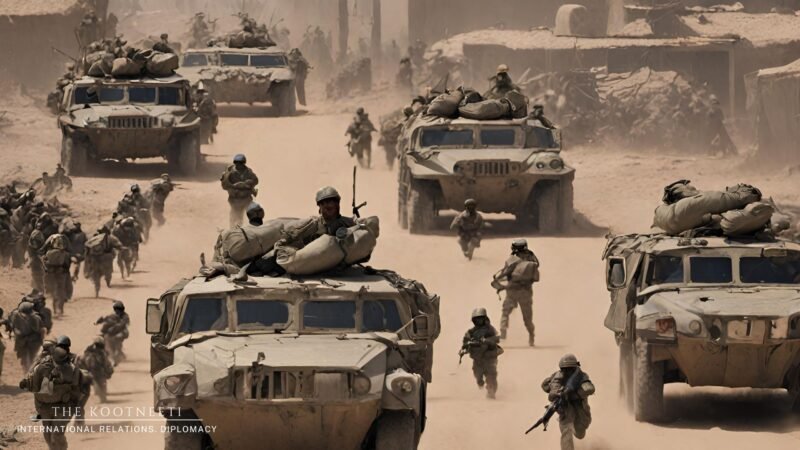Challenges of implementing International Humanitarian Law in Modern Conflicts

International Humanitarian Law (IHL) consists of a set of rules that govern how states behave in war. These rules can also be called the law of war or the law of armed conflict. The main objective of these rules is to protect civilians and constrain the states and parties involved in the war or armed conflict from certain means and methods of warfare. The sources of IHL can be traced back to the Geneva Conventions of 1949 and customary international law general rules that are accepted as laws independent of any treaty. Particularly, the majority of the most important rules of IHL are set out in the Four Geneva Conventions of 1949 framed after the brutal World War Two.
IHL regulates both international armed conflicts (IACs) and non -non-international armed conflicts (NIACs). IHL applies to all parties involved in the conflict. States are bound by their treaty obligations and also to customary international law. Non-state actors are bound by customary international law. Non-actors do not sign treaties but that doesn’t stop them from being scrutinised by international law.
Traditional warfare involves two or more states’ armies fighting on a battlefield. Contemporary warfare has changed with the involvement of non-state sectors. Warfare today is being conducted not only along the front lines between states but also in civilian environments involving non-state actors. Post Cold War era has witnessed a rise in the number of conflicts between state and non-state actors. These conflicts involve parties that differ in their strengths both qualitative and quantitative. These conflicts are described as asymmetric. In asymmetric warfare the weaker party resorts to means and methods prohibited by IHL to compensate for its military and economic inadequacy. The weaker party tries to engage the enemy not on the traditional battlefield but inside civilian populated areas using civilians as shields. Military targets are replaced by civilian ones.
Asymmetric warfare does not fit in with the conventional concept of IHL. This creates challenges to the implementation of international humanitarian law as both parties in the conflict try to violate or reinterpret the provisions of IHL to suit their own needs. IHL is based upon four important principles namely: Distinction, Necessity, Proportionality, and Humanity. These principles are often violated in asymmetric conflicts in different ways.
The Principle of Distinction commands belligerents to distinguish between civilians and combatants. In asymmetric warfare, civilians are targeted by conducting indiscriminate attacks. The Principle of Necessity permits armed forces to conduct operations that are not prohibited by IHL. However, these operations should be conducted in accordance with the Principle of Proportionality. The Principle of Proportionality prohibits any operation or attack that causes disproportionate loss of civilian lives and civilian infrastructure. The Principle of Humanity prohibits the infliction of any unnecessary suffering.
Asymmetric warfare does not involve conventional organized militaries fighting in open areas. Asymmetric warfare requires a military to conduct operations in urban areas where it becomes difficult to distinguish between civilians and combatants. This makes it harder for the application of the Principles of Distinction, Proportionality, and Necessity. Today’s warfare is not the same as conventional warfare. Non-state actors such as guerilla movements and terrorist groups have increased. Asymmetric conflicts are fought between states and non-state actors in urban environments. It becomes challenging to implement IHL as non-state actors are involved.
Upholding IHL principles provides a bulwark against eroding humanity amid violence. As war’s tragedies persist globally, IHL ultimately represents the safeguarding of our civilizational conscience and the promise to protect innocents. All parties to conflict must summon the wisdom and moral courage to abide by IHL, even in the face of new paradigms of hostilities. For in safeguarding the most vulnerable, we secure not only their futures but our own humanity.


















